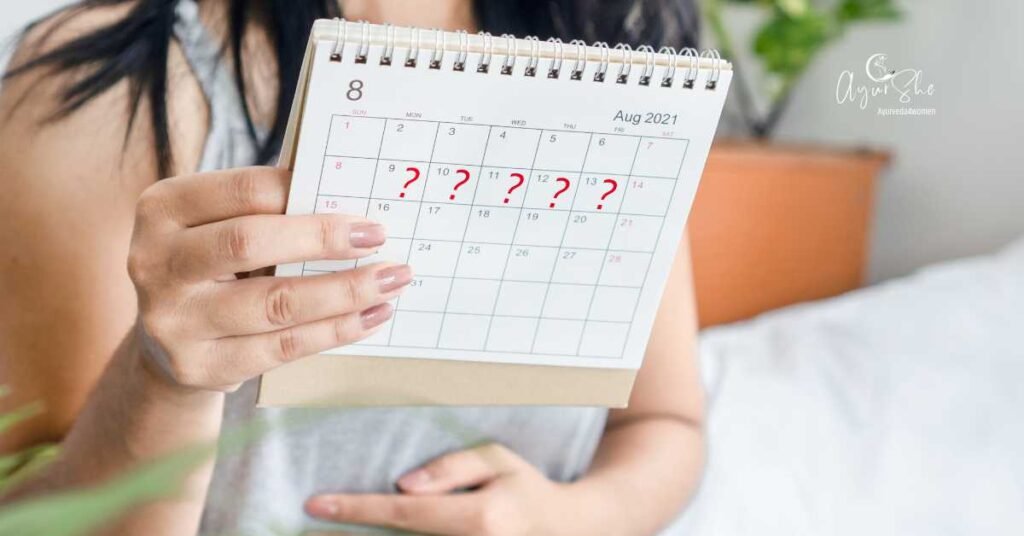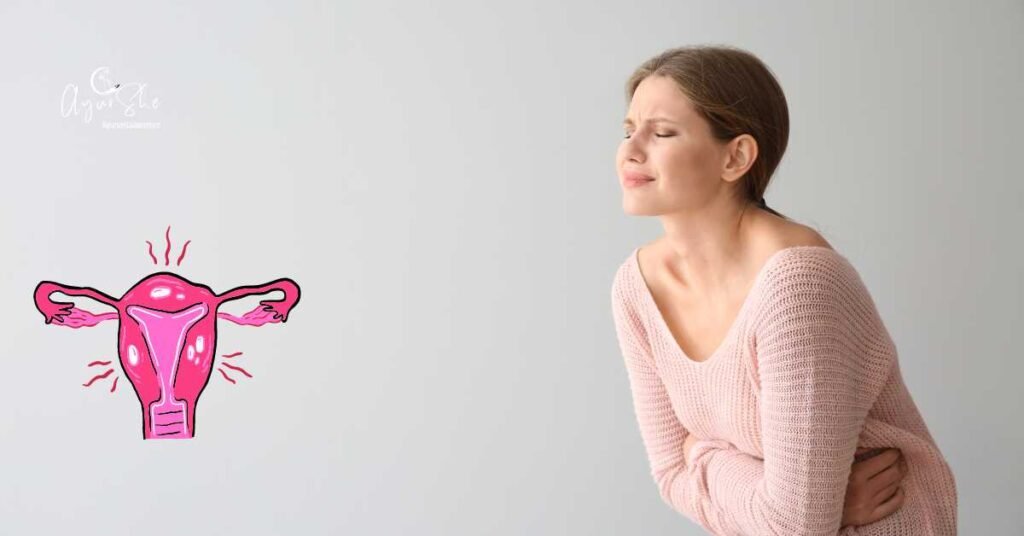Urinary tract infections are among the most common bacterial infections in women. Up to 50–60% of women experience at least one UTI in their lifetime, with recurrences frequent in sexually active, peri-menopausal, and post-menopausal groups. Modern medicine attributes UTIs primarily to ascending infections by uropathogens (most commonly E. coli) exploiting anatomical and behavioral risk factors.
Ayurveda, while not naming “UTI,” describes closely aligned conditions under Mutrakricchra (dysuria), Mutraghata (obstructive/retention states), and Pittaja-Mutrakricchra (burning, inflammatory dysuria), mapping the syndrome to derangements of Pitta (heat/inflammation) with Vata (spasm/pain/urgency) and Kapha (mucus/biofilm) in Mutravaha Srotas (urinary channels).
This review unifies modern diagnostics and red flags with authentic Ayurvedic chikitsa, including dosages and how-to-use, plus prevention strategies that actually stick.
1) Modern lens: pathophysiology, risks, symptoms
Pathophysiology. Uropathogens colonize the periurethral area and ascend into the bladder (cystitis) and sometimes kidneys (pyelonephritis). Adhesins (e.g., P fimbriae) enable biofilm formation and immune evasion.
Key risk factors
Anatomy (short female urethra), sexual activity, new partner, spermicide/diaphragm use
Poor hydration; delayed voiding; tight/non-breathable underwear
Pregnancy (stasis), diabetes, post-menopausal estrogen deficiency (urogenital atrophy)
Prior antibiotic exposure (resistance), recurrent UTIs, catheterization
Typical symptoms
Burning micturition, frequency, urgency, suprapubic pain
Cloudy/foul-smelling urine, occasionally hematuria
Fever/flank pain → suspect upper UTI (kidneys)
2) Red flags & when to escalate (must-know)
Seek immediate medical care if any of these:
Fever >38°C, flank pain, chills (possible pyelonephritis)
Pregnancy with UTI symptoms
Diabetes, immunosuppression, renal stones, known structural anomalies
Recurrent UTIs (≥3/year) or symptoms not responding to 48–72 h of first-line care
Hematuria, severe pain, vomiting, or dehydration
3) Differential diagnosis (women’s pelvic pain triage)
Vaginitis (candida/bacterial vaginosis): discharge/itching > dysuria
STIs (chlamydia, gonorrhea): cervicitis, dyspareunia, post-coital bleeding
Urethral syndrome, interstitial cystitis/bladder pain syndrome
Nephrolithiasis (colicky flank pain, hematuria)
Gynecologic: endometriosis flare, pelvic inflammatory disease
4) Modern diagnosis & treatment basics
Tests
Urinalysis (leukocyte esterase, nitrites), urine culture with sensitivities for recurrent/complicated cases
Pregnancy test (if applicable)
Ultrasound if obstruction, stones, or recurrent/complicated infections
Treatment snapshots (for context)
Uncomplicated cystitis: short antibiotics course per local resistance data (e.g., nitrofurantoin, fosfomycin)
Pyelonephritis: systemic antibiotics, sometimes hospitalization
Post-menopause: consider topical vaginal estrogen for recurrence prevention (modern)
(We will integrate Ayurveda alongside, not instead of, medical care—especially for red-flag or complicated cases.)
5) Ayurveda: mapping, samprapti, and goals
Mapping.
Pittaja-Mutrakricchra → burning, yellow urine, inflammation
Vataja → pain/spasm, scanty flow, urgency/retention tendencies
Kaphaja → heaviness, turbid urine, tendency to mucus/biofilm
Samprapti (pathogenesis).
Pitta aggravation from hot, spicy, sour, acidic foods; dehydration; excessive heat → daha (burning), raga (redness).
Vata vitiation from suppression of urges (vega-dharana), erratic routines → shoola (pain), sanga (spasm).
Kapha with ama fosters srotorodha (channel blockage) → slime/biofilm-like milieu encouraging recurrence.
Mutravaha Srotas dushti (urinary channel imbalance) is central.
Therapeutic goals.
- Shamana: cool Pitta, pacify Vata spasm, clear Kapha/ama; sterilize & flush channels
- Srotoshodhana: improve flow, reduce biofilm tendency
- Rasayana: rebuild urothelial resilience, immune tone
- Nidana parivarjana: remove causes (diet, dehydration, behavioral factors)
6) Ayurvedic remedies (with dosage & how to use)
Doses are adult general ranges; tailor with practitioner for pregnancy, comorbidities, or concurrent meds.
Core anti-dysuria & anti-inflammatory (Pitta-shamana)
Gokshura (Tribulus terrestris)
Use: Diuretic, anti-inflammatory, relieves burning
Dose: 500 mg capsule, twice daily after meals; or 3–5 g churna in warm water, BID
Chandana (Santalum album) & Ushir (Vetiveria zizanioides)
Use: Cooling, soothes burning/daha
Dose: Chandana churna 1–2 g + Ushir 1–2 g in lukewarm water, BID
Daruharidra (Berberis aristata) / Haridra (Curcuma longa)
Use: Antimicrobial, anti-biofilm support
Dose: Daruharidra 500 mg cap BID; Turmeric 1/2 tsp in warm water BID
De-edema & anti-recurrence (Kapha-ama clearing)
Punarnava (Boerhavia diffusa)
Use: Renal/uro-protective, anti-edema, diuretic
Dose: Punarnava mandur 250–500 mg BID after meals; or 5–10 ml liquid extract BID
Varuna (Crataeva nurvala)
Use: Anti-inflammatory for lower tract, supports flow; helpful with stones/obstruction tendencies
Dose: Varunadi kwath 20–30 ml, BID before meals
Composite classical formulations (practical)
Chandanasava (cooling asava)
Dose: 15–20 ml with equal water after meals, BID (burning, frequency)
Punarnavasava (diuretic, anti-edema)
Dose: 15–20 ml with equal water after meals, BID
Gokshuradi Guggulu
Dose: 1 tablet (250–500 mg) TID after meals (dysuria, recurrent UTI, gravel)
Chandraprabha Vati
Dose: 1–2 tablets BID after meals (broad urinary support; avoid prolonged use without counsel in pregnancy)
Yashtimadhu (Glycyrrhiza glabra) adjunct
Dose: 250–500 mg cap BID or 1–2 g churna in water (soothing mucosa; watch BP in sensitive individuals)
Acute soothing drinks (home adjuvants)
Dhania–Jeera–Saunf herbal water (Coriander–Cumin–Fennel)
How: Boil 1 tsp each in 1 L water; reduce by ~20%; sip warm through day
Barley water (Yavagu)
How: Boil 2 tbsp barley in 1 L water; add a pinch of cardamom; sip warm—diuretic & Pitta-cooling
Coconut water (room-temp) for gentle cooling & electrolytes (avoid excess in renal compromise)
Pregnancy: Prefer Chandanasava, Gokshura (mild), Yashtimadhu (short term) under supervision; avoid guggulu/form-strong bitters unless prescribed.
7) Diet (Ahara) & Lifestyle (Vihara) that change outcomes
Hydration targets. 2–2.5 L/day (adjust for climate, renal advice). Aim for pale-straw urine. Front-load earlier in the day; avoid chugging at bedtime.
Foods to favor (Pitta-Vata pacifying)
Water-rich fruits (pear, pomegranate, watermelon in season)
Cooked vegetables (bottle gourd, ash gourd, pumpkin, zucchini)
Whole grains (barley, old rice), mung dal khichdi with a tsp ghee
Spices: coriander, fennel, cumin, cardamom (cooling/carminative)
Probiotic foods (fresh buttermilk with roasted cumin, daytime only)
Foods to dial down / avoid (flare Pitta/Kapha/ama)
Chilies, pickles, vinegar, deep-fried and ultra-processed foods
Very sour citrus in acute burning phase; colas/energy drinks
Excess sugar (feeds dysbiosis), heavy cheeses; night-time curd
Behavioral pivots
Do not hold urine; void post-intercourse; wipe front-to-back
Breathable cotton underwear; change out of sweaty clothes promptly
Avoid prolonged sitting; schedule micro-movement (2–3 min/hr)
Sex-related UTIs: consider water-based, non-spermicidal lubricants; urinate before/after
Pelvic & breath practices
Pelvic floor relax–contract cycles (not just Kegels; include relaxation to reduce urgency spasm)
Nadi Shodhana 5–7 min BID to down-shift sympathetic tone (urgency/pain)
8) Panchakarma & procedures—when and how
Acute UTI with fever is not a time for strong shodhana. Once infection is cleared (culture-guided), consider gentle srotoshodhana for recurrent cases:
Mridu virechana (mild purgation) for Pitta down-regulation (under supervision)
Basti (matra basti with Kshira-bala taila or Dashamoola decoction cycles) for Vata spasm/urgency phenotypes
Uttarabasti is not routine for simple UTIs; reserved for specific gyne-uro indications by experts
9) Recurrence prevention playbook (3–6 months)
- Base stack (daily)
Gokshura 500 mg BID + Punarnavasava 15–20 ml BID after meals
Coriander–fennel water sips through day
- Add for “burning-dominant” types (Pitta)
Chandanasava 15–20 ml BID (replace Punarnavasava if edema absent)
- Add for “spasm-urgency” types (Vata)
Dashamoola kwath 20 ml BID before meals; Bala taila abhyanga to lower abdomen/low back 5–10 min daily
- Gut & vaginal microbiome
Buttermilk (diluted, midday), fiber-rich diet; medical-grade vaginal probiotic strategies via gynecologist if recurrent
- Post-menopausal
Discuss vaginal estrogen (modern) + sesame/ghee internal nourishment (diet) + Yashtimadhu short-term soothing
10) Integrative algorithm (practical)
Step 1 — Red-flag screen. If fever/flank pain/pregnancy/diabetes → modern care first, culture + antibiotics.
Step 2 — Uncomplicated cystitis. Start hydration + Chandanasava/Punarnavasava + Gokshura; add Chandraprabha Vati short-course. If no relief in 48–72 h → culture & physician review.
Step 3 — After resolution. 3–6 months Ayurvedic base stack, diet/lifestyle pivots, pelvic-breath work.
Step 4 — Recurrent cases. Evaluate stones, glycemic control, pelvic floor dysfunction, estrogen status; consider Mridu virechana/Basti cycles.
11) Safety, interactions, and special situations
Pregnancy: any dysuria/fever is medical; use Ayurvedic adjuvants only under OB-GYN + Vaidya guidance.
Kidney disease/heart failure: diuretics (Punarnava, asavas) need dose prudence.
Drug-herb interactions: Berberine-rich herbs (Daruharidra) may interact with certain meds—space out dosing; monitor sugars if diabetic.
Bhasma preparations: not typically required for UTI; use only when indicated, under supervision.
12) FAQs (SEO boosters)
Q1. Can UTIs be cured without antibiotics?
Mild, first-episode cystitis can sometimes settle with aggressive fluids and targeted Ayurveda, but culture-guided antibiotics remain standard; never delay care with red flags.
Q2. Best instant relief for burning?
Chandanasava + coriander-fennel water, room-temp coconut water, and Gokshura often reduce burning within 24–48 h (if uncomplicated).
Q3. How long to continue prevention plan?
Minimum 8–12 weeks, ideally 3–6 months with step-down taper once symptom-free.
Q4. Are cranberry tablets needed?
They can reduce adhesion of E. coli in some, but results vary. Pair with Ayurvedic cooling/diuretic regimen and fundamentals (hydration, voiding habits).
Conclusion
UTIs in women thrive where heat, stagnation, and biofilms meet dehydration and behavioral triggers. Modern medicine excels at rapid pathogen control, while Ayurveda fortifies the terrain—cooling Pitta, easing Vata spasm, clearing Kapha/ama, and rebuilding urothelial resilience with herbs like Gokshura, Punarnava, Chandana, Varuna, and smart dietary-lifestyle care.
The integrative approach reduces recurrence, lowers antibiotic exposure, and puts women in charge of durable urinary health.




